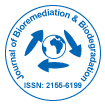Our Group organises 3000+ Global Events every year across USA, Europe & Asia with support from 1000 more scientific Societies and Publishes 700+ ������ Journals which contains over 50000 eminent personalities, reputed scientists as editorial board members.
������ Journals gaining more Readers and Citations
700 Journals and 15,000,000 Readers Each Journal is getting 25,000+ Readers
Citations : 7718
Indexed In
- CAS Source Index (CASSI)
- Index Copernicus
- Google Scholar
- Sherpa Romeo
- Open J Gate
- Genamics JournalSeek
- Academic Keys
- JournalTOCs
- ResearchBible
- China National Knowledge Infrastructure (CNKI)
- Ulrich's Periodicals Directory
- Access to Global Online Research in Agriculture (AGORA)
- RefSeek
- Hamdard University
- EBSCO A-Z
- OCLC- WorldCat
- SWB online catalog
- Publons
- Geneva Foundation for Medical Education and Research
- MIAR
- ICMJE
Useful Links
Recommended Journals
Related Subjects
Share This Page
In Association with
Synthesis, characterization and application of biopolymer (Pullulan)-mediated silver nanoparticles
7th International Conference and Exhibition on Biopolymers and Bioplastics
G V S Rama Krishna
K L University, India
Posters & Accepted Abstracts: J Bioremediat Biodegrad
DOI:
